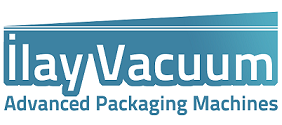What is Packaging and Vacuum Packaging?
Packaging; It is called the action of coating these products in different ways by bringing together some products in order to be delivered to the customers. Vacuum packaging is the packaging of the products to be packed by vacuum packaging machines by contact with various gases and is called the packaging of the air inside the package.
Due to the rapid development of technology, many of our needs have increased. Time is very important to meet these growing needs. People complain of timelessness. In almost every sector, the use of machines has increased for people to save time. For this reason, different machines have been produced for use in many sectors. Some of these produced machines were vacuum packing machines.
Vacuum Packaging Machines Usage Areas
Vacuum packaging and vacuum packaging machines are sold in the old times due to the fact that the products sold with open mouth are not in demand today; In addition to being used in food sectors in different fields including pulses, dried fruits, cereals, pickle varieties, dusty foods such as flour and yeast, they are used in vacuuming products that are not in the food sector. For example; It can be used in the vacuuming of hydraulic parts and materials used in industry and various industrial fields, in vacuuming of pneumatic parts and materials, in vacuuming of automotive spare parts and materials and in vacuuming of construction materials.
Vacuum packaging and vacuum packaging machines are used in greenhouse cultivation as well as factories and workshops that are producing today. In fact, the need for vacuum packaging in greenhouses can be up to 500 kilograms, depending on the amount of product produced and can be up to 5-10-15 tonnes. If we look at these amounts, the vacuum packing machine will become indispensable in our lives.
Since the products stored in this way are not contacted with oxygen, the shelf life is increased by 200% to 500% depending on the type of product. Generally, these vacuumed packages take the form of a square or rectangular shape. Size sizes can be changed on request.
Types of Vacuum Packaging Machines by Function
Vacuum packaging machines are divided into 2 “horizontal and vertical” according to their usage areas. Foodstuffs such as grocery stores, delicatessen, shopping malls, cheese, sausage, legumes, raw meatballs and sausages generally use horizontal vacuum packaging machines. These machines are available in different design cases, but these machines usually have their own stand. Motor powers and vacuum capacities are high.
Vertical vacuum packaging machines have quite different designs. For example, they can be double or single vertical chamber according to need. Hazelnuts, pistachios, walnuts, almonds, coffee and dried products such as dried products are preferred by the sectors. Usually vertical vacuum packaging machines are used by wholesalers and factories. They are used in vacuuming of liquid and semi-liquid foods such as pickles and dusty foods such as flour because they have the principle of working with the vertical chamber.
Even though horizontal and vertical vacuum packaging machines differ in terms of their working principles, they are very similar in terms of their technical characteristics. Generally, horizontal and vertical vacuum packaging machines are made of stainless steel. However, depending on the function and function of the machine to be used, it can be produced in different ways. Some machines are made of stainless chrome. These differences create a difference in price between machines.
In addition, horizontal and vertical vacuum packaging machines, weight, size, as they occupy the differences in the area. Therefore, these vacuum packaging machines should be decided correctly before they are purchased. After that, the capacity of these machines should be investigated by taking into account the type of the products to be packed, and the machine selection should be made after all these survey studies.
In addition, the vacuum packaging machines sold are generally guaranteed products, and many companies produce parts to prevent any shortage of parts.
